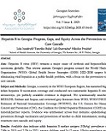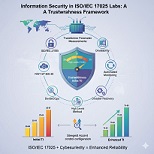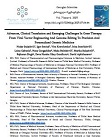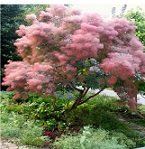Evaluation of proliferative activity of different subtypes of basal cell carcinomas by AgNOR technology
Downloads
Basal cell carcinoma of the skin represents 75% of primary tumors of epithelial origin. It is characterized by slow growth and rarely gives metastases due to low angiogenic potential, although it has the ability to develop local invasion, tissue destruction and recurrence. Independent prognostic factors of basal cell carcinoma are gender, age, presence of immunosuppression. , bright phototype of the skin, freckles, burns of the skin in childhood, light coloring of the skin and hair. Among the environmental risk factors, the impact of the sun's ultraviolet rays on the skin has been well studied. Ultraviolet B radiation (UBV) generates mutagenic photo-products such as cyclopyrimidine dimer in DNA and induces mutation of the tumor suppressor P53 gene. Ultraviolet A radiation (UAV) has an indirect effect through the accumulation of cytotoxic and mutagenic free radicals. Basal cell carcinomas are often classified as aggressive and non-aggressive. The aggressiveness of a tumor is expressed by the ability to invade deep tissues and possibly metastasize. Micronodular, infiltrative and sclerodermiform histological subtypes are considered more aggressive compared to superficial and nodular subtypes. There are studies, according to which the features of the expression of the proliferation marker Ki67 are associated with non-aggressive subtypes of basal cell carcinomas. The aim of the study was to evaluate the proliferative activity of basal cell carcinomas with low risk of aggressive behavior (nodular, superficial) and basal cell carcinomas with high risk of aggressive behavior (infiltrating, micronodular) at the epicenter and periphery of the tumor using AgNOR technology.
Downloads
Rönsch H, Bauer A. The Preventive Value of Sun Protection. In: ; 2021:316-328. doi:10.1159/000517641
Didona D, Paolino G, Bottoni U, Cantisani C. Non Melanoma Skin Cancer Pathogenesis Overview. Biomedicines. 2018;6(1):6. doi:10.3390/biomedicines6010006
Griffin LL, Ali FR, Lear JT. Non-melanoma skin cancer. Clinical Medicine. 2016;16(1):62-65. doi:10.7861/clinmedicine.16-1-62
Chren MM, Linos E, Torres JS, Stuart SE, Parvataneni R, Boscardin WJ. Tumor Recurrence 5 Years after Treatment of Cutaneous Basal Cell Carcinoma and Squamous Cell Carcinoma. Journal of Investigative Dermatology. 2013;133(5):1188-1196. doi:10.1038/jid.2012.403
Wu QJ, Sun H, Wen ZY, et al. Shift work and health outcomes: an umbrella review of systematic reviews and meta-analyses of epidemiological studies. Journal of Clinical Sleep Medicine. 2022;18(2):653-662. doi:10.5664/jcsm.9642
Wen M, Ren H, Zhang S, Li T, Zhang J, Ren P. CT45A1 promotes the metastasis of osteosarcoma cells in vitro and in vivo through β-catenin. Cell Death Dis. 2021;12(7):650. doi:10.1038/s41419-021-03935-x
Sara Espinosa N, McCullough B, Schmults CD, et al. NCCN Guidelines Version 2.2024 Basal Cell Skin Cancer NCCN Evidence Blocks TM Continue ϖ Dermatology ф Diagnostic/Interventional Radiology ‡ Hematology/Hematology Oncology Þ Internal Medicine † Medical Oncology ζ Otolaryngology ≠ Pathology/Dermatopathology Ÿ Reconstructive Surgery § Radiotherapy/Radiation Oncology ¶ Surgery/Surgical Oncology * Discussion Section Writing Committee NCCN Guidelines Panel Disclosures.; 2023. www.nccn.org/patents
Dongre A, Rashidian M, Eaton EN, et al. Direct and Indirect Regulators of Epithelial–Mesenchymal Transition–Mediated Immunosuppression in Breast Carcinomas. Cancer Discov. 2021;11(5):1286-1305. doi:10.1158/2159-8290.CD-20-0603
Mendez-Flores R, Martínez-Fernández D, Vega-De la Torre D, et al. Role of Bcl-2, p53, and Ki-67 expression in basal cell carcinoma and their association with aggressive and non-aggressive histological phenotypes. Advances in Dermatology and Allergology. 2022;39(3):517-523. doi:10.5114/ada.2022.117598
Metreveli B, Gagua D, Burkadze G, Kepuladze S. Proliferative characteristics of eutopic and ectopic endometrium in adenomyosis using AgNOR technology. GEORGIAN SCIENTISTS. Published online January 24, 2023. doi:10.52340/gs.2023.05.01.04
Tavdgiridze N, Tevdorashvili G, Kepuladze S, Burkadze G. Assessment of proliferative activity of immature ovarian teratomas using AgNOR technology. GEORGIAN SCIENTISTS. Published online March 20, 2023. doi:10.52340/gs.2023.05.01.20
Murgod S, Channabasaviah G, Shivamurthy D, Ashok L, Krishnappa S. Prognostic potential of AgNORs in oral submucous fibrosis. J Int Soc Prev Community Dent. 2016;6(2):167. doi:10.4103/2231-0762.178746
Nishie H, Hirooka Y, Kaibara N. Argyrophilic nucleolar organizer regions of breast tumors: Assessment of aspirated cytological materials. Breast Cancer. 1996;3(3):199. doi:10.1007/BF02966984
Chiu KY, Loke SL, Wong KK. Improved silver technique for showing nucleolar organiser regions in paraffin wax sections. J Clin Pathol. 1989;42(9):992-994. doi:10.1136/jcp.42.9.992
Copyright (c) 2023 GEORGIAN SCIENTISTS

This work is licensed under a Creative Commons Attribution-NonCommercial-NoDerivatives 4.0 International License.










































































































































































































